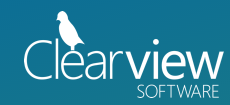Architecture accounting software is accounting software that allows firms to track time spent working on multiple projects, manage expenses and budgets and accurately bill customers for their work.
Architectural accounting software tracks costs by individual job and records client information. Since billing for services is usually measured in units of time, the software is usually equipped with time-logging abilities and the ability to allocate time to different projects and clients. In-depth analysis should also be available from breaking down each project into organized steps within a set schedule. Time can be designated as either billable or nonbillable.
The architecture firms have specific accounting requirements. Generally, billing is the primary function of time in not only in architecture market but in almost every industry. Architects also work hard to meet the client's expectations and managing the communications. With a number of available accounting software, it is essential to find the best package to meet a specific requirements. While considering all the requirements, our professionals have come up with the best products available for architecture accounting.
Virtuous Reviews serves its users as a business review platform, providing independent, impartial reviews on different categories just like architecture accounting in softwares. Besides reading others reviews, Virtuous Reviews also allows the user to share their opinions about a particular product. Users can compare the competitive products on the basis of our consumer-driven reviews & ratings.
How to choose the best architecture accounting software?
Like some other industry packages, architectural accounting software benefits from specific report-writing mechanisms which can deliver descriptive progress and billing documents to a client. The size of the firm will have a big impact on the system needs. For example, a larger firm, dealing with multiple projects and employees, will need more robust project and time tracking capabilities than an individual freelancer.
When evaluating these systems, buyers should consider the following:
- Can the system log hours and mark as billable or nonbillable?
- How deep are the project scheduling/progress tracking capabilities?
- Can the system effectively manage costs and progress for multiple projects at once?
- Does it come with solid report-writing mechanisms?
Features:-
- Project & department management - Architecture firms need to manage lengthy design projects. By automating scheduling, allocating resources and budgeting and forecasting, firms can better ensure accurate proposals and effective use of employees.
- Time billing -Time and billing modules use timesheets and expense reports to funnel back into the project plan the actual costs, billable time and non-billable time spent. This ensures accuracy in billing and in estimating for future projects and helps maximize cost recovery.
- Customer relationship management (CRM) - CRM systems supports lead development, marketing campaigns, and customer service by using a comprehensive database to track prospects and current/past clients. Architecture firms get most of their business from the referrals and developed relationships.
- Document sharing & development - Secure document collaboration allows sharing information of projects, clients and other records of the relevant employees.
- Audit trail - Track and organize expenses and individual project steps in case of a mistake in billing or an expense that qualifies for client reimbursement.
Benefits:-
Knowledge base of best practice processes
The importance of a knowledgeable and professional farm manager is essential for maximizing the appreciation and income of investment farmland. To be successful, farmers need the skills to produce what the market wants and what satisfies consumers. A knowledge base of best practice processes with information about when and how to perform some activities in field, pests treatments and their products and fertilizers enabling farmers to make informed decisions.
Personal data
Enables you to collect, process, store and disseminate the data in the form of information needed to carry out the operations functions of the farm. This can be data of land use (land preparation, yields, fertilization and protection management, crop rotations), data of inputs used, product price and input cost, their unit and total cost and where to obtain them.
Accurate personal records, along with financial and production data, will help farmers analyze the information and make the necessary adjustments to operate more efficiently, thus increasing profitability.
On-time information
In agriculture, farmers have multiple risks to deal with, such as weather conditions, diseases, demand, supply or market prices for their goods, which are often far beyond farmers’ direct influence.
If adverse events occur, they are traceable through the system and immediately visible in the farm management software (in real-time) to prevent further waste and damages. Scheduled and on-going activities, along with consumption of resources are recorded and performance is measured on hourly and daily basis for every cost object employed and every activity triggered in farm’s ecosystem.




 Visit Website
Visit Website









